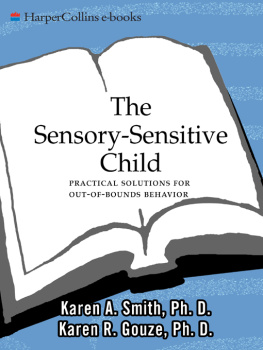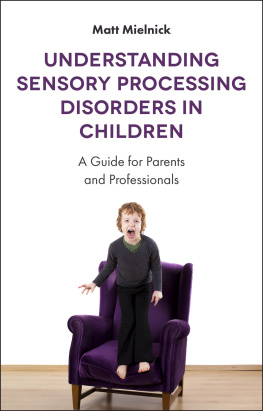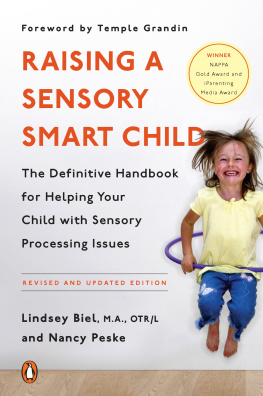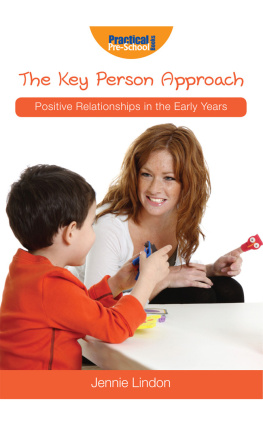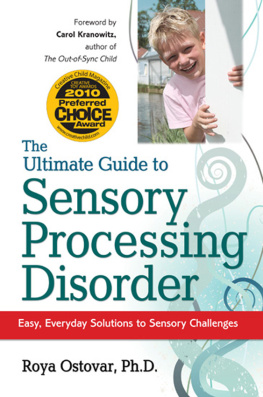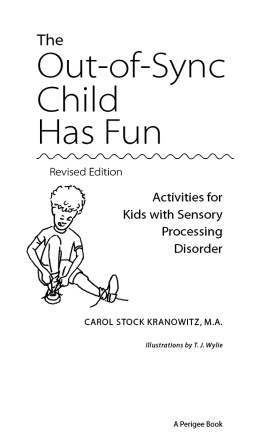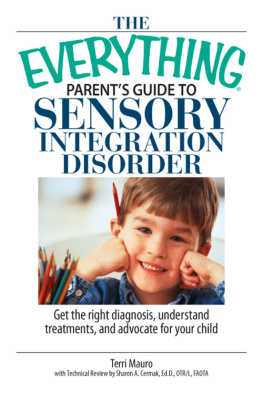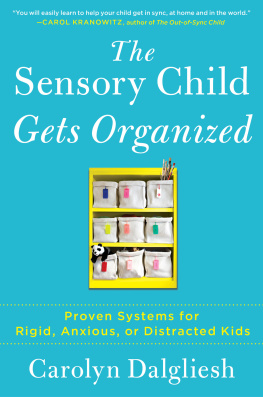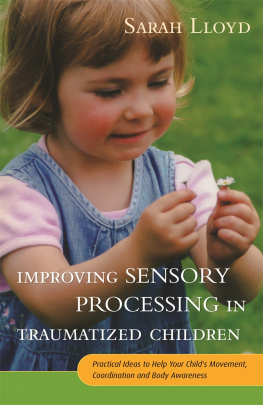Karen A. Smith, Ph.D.
Karen R. Gouze, Ph.D.
This book is written as a source of information only.
The information contained in this book should by no means be
considered a substitute for the advice, decisions, or judgment
of the readers physician or other professional adviser.
T HIS BOOK is the story of children whose senses have failed them. These children do things that baffle their teachers, try the patience of their parents, and disappoint themselves. They refuse to cooperate with the simplest requests. They come across as different, awkward, or preoccupied. They may appear frustrated, anxious, or just out of sorts. This is the story of children who are in trouble despite their best intentions.
It is a story we stumbled upon. As two mothers, friends, therapists, and professors of clinical psychology, we had been working with children and their families for almost two decades. However, it was our own sonsBen, now 15, and Evan, now 9who caused us to reexamine our core beliefs about the problems that parents of young children had been describing to us for years. We thought we knew how to manage difficult behavior until we found ourselves living with two boys who didnt fit the models from which we had been operating. They caught us by surprise. We were not prepared for what they had to teach us. They laid markers along a path that required us to look beyond the traditional teachings of our discipline to a broader view of the underlying causes of problematic behavior in children.
Through our experiences with Ben and Evan and many other children in our practices, we became convinced that the standard diagnostic labels historically attached to children who are difficult to get along with do not always capture the complexity and nuance of their perplexing behavior. Teachers, psychologists, and parents frequently blame the problem on the child, labeling him as stubborn, hyperactive, or just downright ornery. Others are more benevolent, joking that he is a horse of a different color. Over time, it becomes hard for him not to think of himself as a troublemaker or an oddball.
We believe that most uncooperative children dont want to cause trouble. They want to please their parents. They want to succeed, but for reasons little understood by them or by the adults around them, they frequently fail. We believe that a significant number of these children are in trouble because they are having difficulty processing sensory information. They avoid and resist seemingly simple everyday tasks because they cannot manage the smells, tastes, sounds, textures, and motion of their everyday lives. This book is about how we came to understand these difficulties in our sons and in many of the children who are brought to our offices by parents in need of help.
We offer readers sensory solutions to behavior that might best be described as out-of-bounds or poorly regulated. This approach is based on sensory integration theory, the life work of the late occupational therapist and educational psychologist Jean Ayres. According to Ayres, dysfunctional sensory processing can contribute to a wide range of behavioral, academic, and emotional problems. Although her theory has not yet been validated from a scientific point of view, it is compatible with and complementary to several well-established bodies of psychological research on child development, brain-behavior relationships, and emotion regulation.
We have come to see that a sensory-based approach to out-of-bounds behavior can be helpful to children who have been given a variety of diagnoses, including oppositional defiant disorder, attention deficit hyperactivity disorder, pervasive developmental disorder, and some anxiety disorders. It also offers promise for many children without a specific psychiatric diagnosis. It is a nonblaming approach based on the belief that childrenespecially young childrenwant approval. To say that they want to misbehave or that they enjoy negative attention is misguided. They do not want to be in trouble. In The Explosive Child , author Ross Greene says it clearly: Children do well if they can . It sounds self-evident to us now, but we didnt always believe this. It was our own sons who guided us to the realization that kids dont say no for no reason.
We wrote this book wearing an assortment of hats. As mothers, we have shared our personal thoughts, feelings, and experiences. We cannot tell our own stories objectively; however, we have tried to tell them accurately and honestly so that other parents may recognize themselves and their children in our examples. Many parents express feelings of great relief when they hear us describe experiences that they assumed were uniquely theirs. For this reason, it is our hope that authenticity is worth the sacrifice of objectivity in our personal narratives.
As psychologists, we have written this book from both a clinical and a scholarly perspective. Scientific knowledge advances through a dynamic exchange between research and practice. Clinical observations almost always come first: teachers, therapists, physicians, and parents notice an unusual behavior and begin experimenting with different responses to it. Over time, a body of anecdotal or observational data begins to accumulate. At some point, this information is organized into a theory or a proposed explanation for the phenomenon. The theory is then tested through rigorous scientific research, and the results of these studies are used to modify and refine the theory. Thus, what we know is always changing.
Ayress ideas about sensory integration grew out of her clinical work with brain-damaged children. By all descriptions, she was a brilliant clinician, and she used her clinical experiences to formulate ideas about the neurobiological foundation of the relationship between sensory processing and behavior. She developed her theory long before the Decade of the Brain (the 1990s), but she intuitively made a lot of good guesses. She expected that the theory of sensory integration would change over time. In 1979, she wrote: Lacking a universally accepted conceptual framework of how the brain works as a whole, this theory has been constructed to provide a unifying concept for heuristic purposes. It is a provisional theory with continued modifications anticipated as research and clinical knowledge help it to evolve.
We are writing this book more than twenty years later. Ideas about brain-behavior relationships are being rapidly reformulated and there is a consensus among researchers that child development research must begin to incorporate knowledge from many disciplines, including biology, neurology, psychology, and education. In light of what is being discovered about the brain and its workings, the time seems ideal for the careful reconsideration of Ayress ideas about the contribution of the senses to behavior. We see many exciting connections between her theory and scientifically solid areas of investigation in the fields of child development and developmental psychopathology.
As therapists, we have many stories to share about children with a wide range of problems who have been helped by a sensory-based treatment approach. Rarely is sensory dysregulation the only problem a child is experiencingit is usually part of a bigger picture. In fact, it may be a missing link in the successful treatment of many unhappy, out-of-bounds children. Understanding a childs sensory processing limitations can lead to dramatic changes in the quality of his school and family life. It is often the mismatch between a childs sensory processing abilities and the sensory demands of his immediate environment that is the key to understanding his behavior. When parents learn to recognize the problems associated with sensory dysregulation, they are able to make sense of behavior that once seemed incomprehensible. They can then analyze a problematic situation from a sensory perspective and arrange the environment accordingly so that the childs sensory needs are respected and accommodated. This makes for a happier child, a more harmonious family, and a more cooperative classroom!

